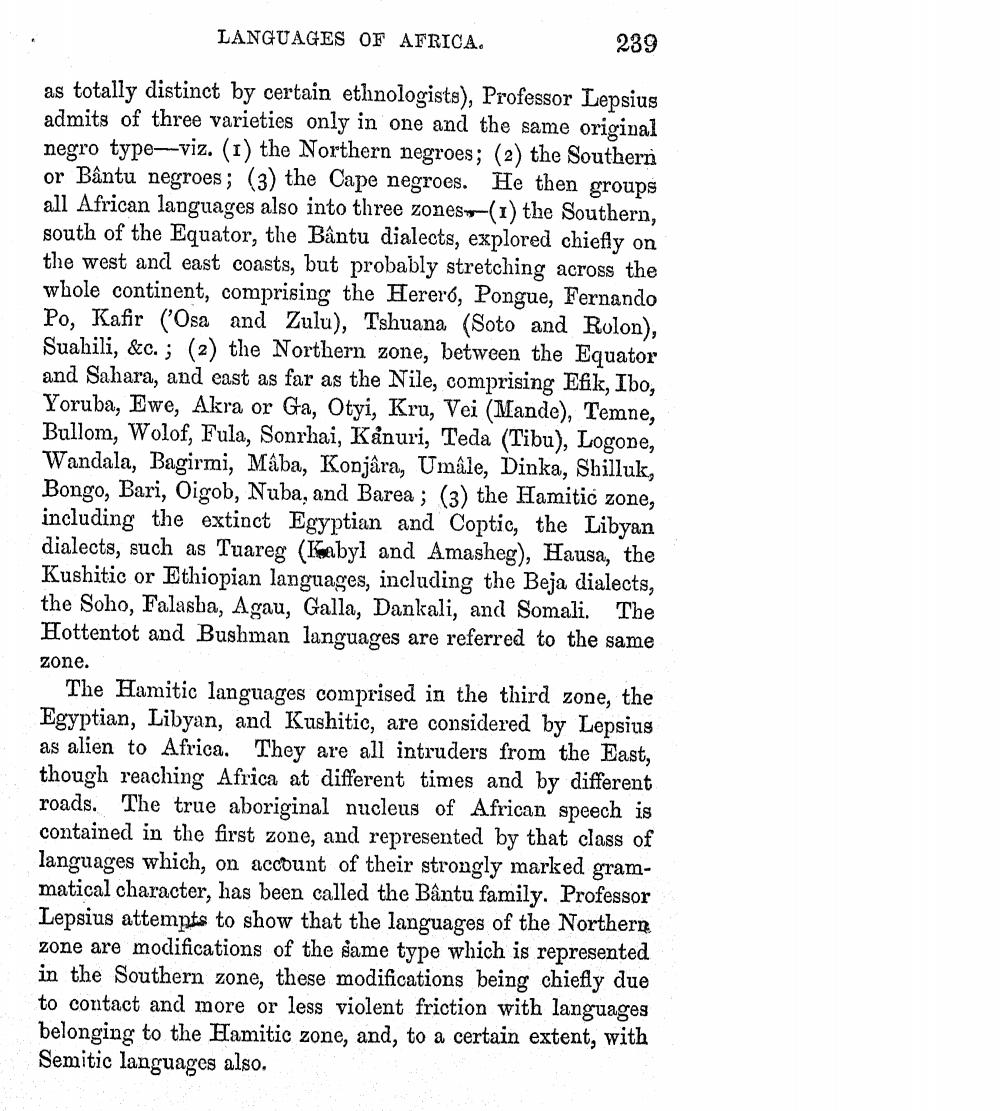________________
LANGUAGES OF AFRICA.
239
as totally distinct by certain ethnologists), Professor Lepsius admits of three varieties only in one and the same original negro type--viz. (1) the Northern negroes; (2) the Southern or Bântu negroes; (3) the Cape negroes. He then groups all African languages also into three zones»-(1) the Southern, south of the Equator, the Bântu dialects, explored chiefly on the west and east coasts, but probably stretching across the whole continent, comprising the Hereró, Pongue, Fernando Po, Kafir ('Osa and Zulu), Tshuana (Soto and Rolon), Suahili, &c.; (2) the Northern zone, between the Equator and Sahara, and east as far as the Nile, comprising Efik, Ibo, Yoruba, Ewe, Akra or Ga, Otyi, Kru, Vei (Mande), Temne, Bullom, Wolof, Fula, Sonrhai, Kảnuri, Teda (Tibu), Logone, Wandala, Bagirmi, Mâba, Konjára, Umâle, Dinka, Shilluk, Bongo, Bari, Oigob, Nuba, and Barea; (3) the Hamitic zone, including the extinct Egyptian and Coptic, the Libyan dialects, such as Tuareg (Kubyl and Amasheg), Hausa, the Kushitic or Ethiopian languages, including the Beja dialects, the Soho, Falasha, Agau, Galla, Dankali, and Somali. The Hottentot and Bushman languages are referred to the same zone.
The Hamitic languages comprised in the third zone, the Egyptian, Libyan, and Kushitic, are considered by Lepsius as alien to Africa. They are all intruders from the East, though reaching Africa at different times and by different roads. The true aboriginal nucleus of African speech is contained in the first zone, and represented by that class of languages which, on account of their strongly marked grammatical character, has been called the Bantu family. Professor Lepsius attempts to show that the languages of the Northern zone are modifications of the same type which is represented in the Southern zone, these modifications being chiefly due to contact and more or less violent friction with languages belonging to the Hamitic zone, and, to a certain extent, with Semitic languages also.




